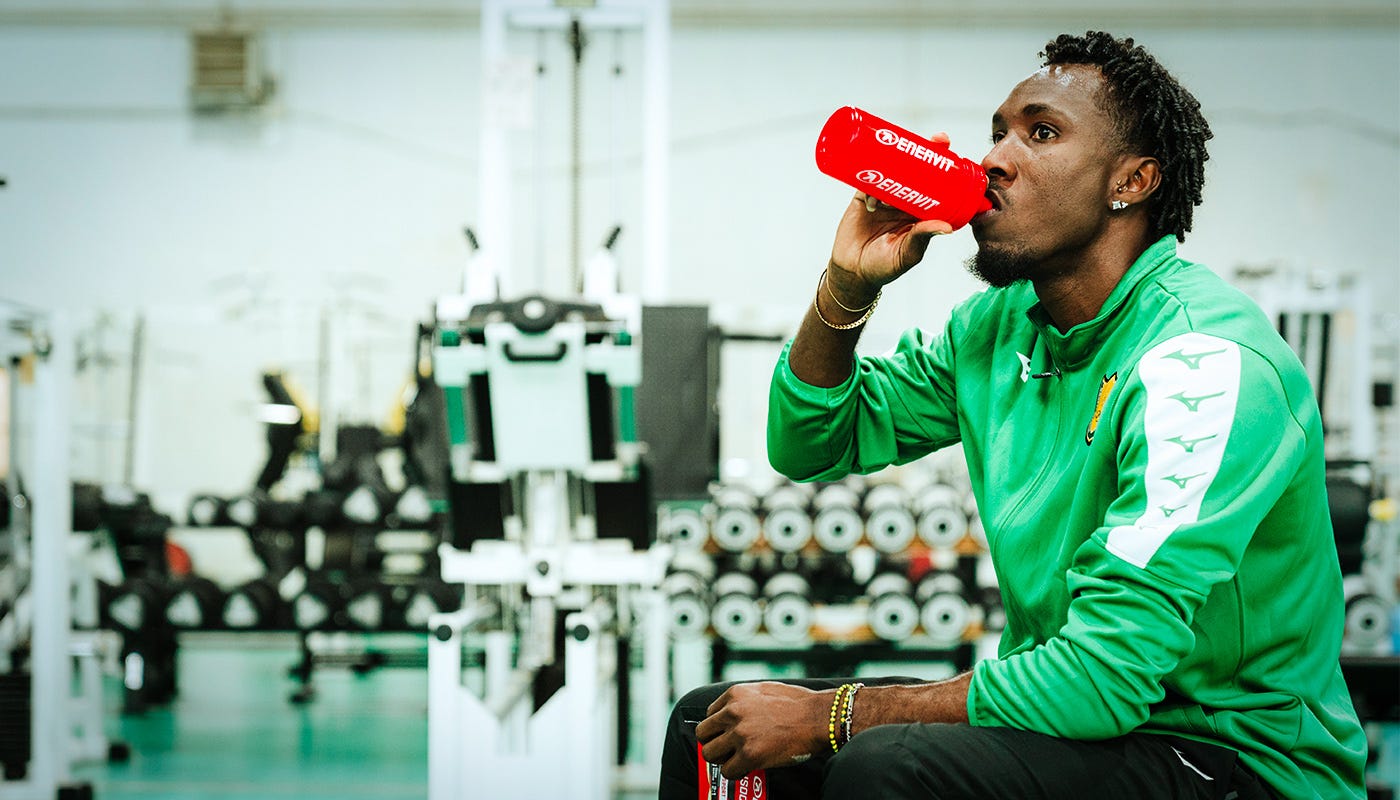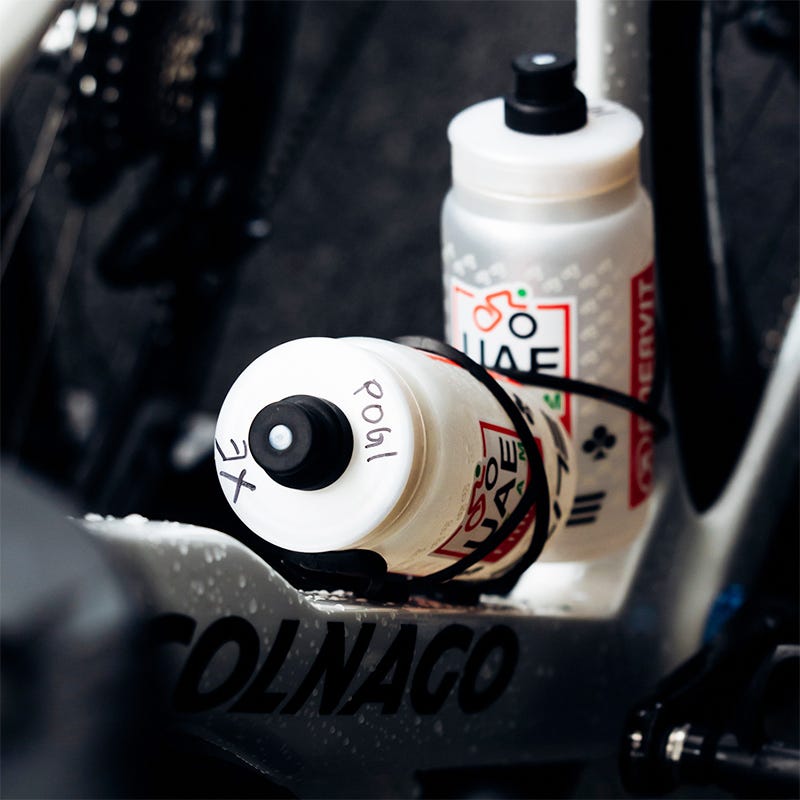SPORTS
What to Drink During Sports:
Learn How to Choose the Right Beverage for You.
What to Drink During Sports:
Learn How to Choose the Right Beverage for You.
by Simone Bisello
Today, in the world of sports, performance is increasingly built around targeted nutrition and proper supplementation. In this context, what we drink before, during, and after physical activity significantly affects both performance and recovery.
A key role is played by powdered mixes to be dissolved in water bottles, formulated to support athletes during different stages of effort. Depending on their composition, these mixes fall into various categories, each suited to specific moments of activity and particular physiological needs.
What Are Soluble Sports Mixes?
Soluble sports mixes are specific formulations designed to provide targeted support to the body throughout all phases of physical activity: before, during, and after effort. Unlike plain water or common sugary drinks, these mixes contain a combination of functional ingredients, such as carbohydrates, electrolytes (sodium, potassium, magnesium), and in some cases, amino acids or vitamins.
Depending on their composition, they offer various benefits, including:
- Effective hydration
- Energy supply during activity
- Support for muscle and energy recovery after exercise
These effects may be combined in the same mix. However, depending on the ingredients used and their concentration in water, some formulations are more targeted toward specific goals, such as prioritizing hydration over energy supply. A crucial factor influencing the function of a mix is osmolarity, meaning the total concentration of dissolved substances in the beverage. Osmolarity determines how quickly the mix is absorbed by the body: the more diluted the solution, the faster the absorption.
Based on this principle, soluble mixes are divided into three main categories:
- Hypotonic
- Isotonic
- Ipertonic
Hypotonic Drinks: "Light" and Rapidly Absorbed
Hypotonic drinks contain lower concentrations of sugars and minerals than body fluids. This makes them absorbed faster, making them ideal when immediate and effective hydration is needed. They generally contain few carbohydrates (1–4% by weight) and a good amount of electrolytes. These characteristics make them the ideal choice when hydration takes priority over energy supply. For example, a drink is considered hypotonic when a 500 mL bottle contains around 10–15 g of carbohydrates.
When to use them:
- During light or short-duration activities (less than 60 minutes).
- In hot and humid conditions with heavy sweating.
- Pre-workout, to hydrate without overloading the stomach.

Isotonic Drinks: The Right Balance Between Energy and Hydration
Isotonic drinks have a solute concentration similar to that of plasma, the liquid part of the blood containing minerals, proteins, and nutrients. This makes them easy to absorb while providing a significant amount of electrolytes and carbohydrates (usually about 6–8%), offering hydration and energy in one solution. A drink with about 30–35 g of carbohydrates in 500 mL is generally considered isotonic.
In some cases, by using high molecular weight carbohydrates (such as maltodextrins), it is possible to deliver high carbohydrate content without significantly affecting osmolarity. This allows for advanced drinks providing up to 60 g of carbohydrates while maintaining an isotonic profile, thus delivering high energy without compromising absorption.
When to use them:
- During medium to long-duration workouts or competitions (over 60–90 minutes).
- In endurance sports like running, cycling, football, or tennis.
- When you need to replenish fluids and carbohydrates simultaneously.
These formulations are ideal during prolonged physical activities when sustaining performance through balanced hydration and energy is crucial.
Hypertonic Drinks: Ideal for Recovery
Hypertonic drinks have a higher solute concentration than body fluids. This means they are absorbed more slowly and tend to draw water into the intestine. As a result, consuming them during exercise may cause discomfort. They are specifically designed for the post-workout phase to replenish glycogen stores and promote muscle recovery.
When to use them:
- After physical activity, to support energy and muscle recovery.
- When the goal is a high-calorie intake.
| Comparison of the Main Types of Sports Drinks | ||||
| Type of Sports Drink | Concentration | % Carbohydrates | Absorption Speed | Recommended Use |
| Hypotonic | Low | 1-4% | Very fast | Light activities and/or hot climates |
| Isotonic | Medium | 6-8% | Fast | Prolonged activities |
| Ipertonic | High | > 10% | Slow | Post-workout recovery |

Pay Attention to Preparation: The Importance of Dilution
Proper preparation of soluble mixes is crucial to achieve the desired effect. The amount of water used to dissolve the product directly affects the beverage's concentration (its osmolarity) and, consequently, how it is absorbed by the body.
For example:
- Over-diluting an isotonic mix turns it into a hypotonic drink, which is absorbed faster but provides less energy.
- Using less water than recommended turns it into a hypertonic drink, which slows absorption and may cause discomfort during exercise.
It is therefore essential to follow label instructions precisely regarding both the amount of powder and the recommended water volume. Only then will the mix have the intended characteristics.
ConclusionThe use of sports drinks should be considered an integral part of an athlete’s nutritional strategy. The various formulations (hypotonic, isotonic, and hypertonic) meet different physiological needs and require conscious choices based on factors such as:
Hydration, energy support, and recovery are not interchangeable processes but specific goals that require targeted approaches. Choosing and diluting the soluble mix correctly allows for optimal intestinal absorption, minimizes the risk of gastrointestinal issues, and maximizes the effectiveness of supplementation. |
Bibliography
- Sawka, M. N. et al. (2007). Exercise and fluid replacement. Med Sci Sports Exerc, 39(2), 377–390. https://doi.org/10.1249/mss.0b013e31802ca597
- Jeukendrup, A. E., & Killer, S. C. (2010). Pre-exercise carbohydrate feeding myths. Ann Nutr Metab, 57(2), 18–25.
- Jeukendrup, A. E. (2014). Carbohydrate intake during exercise. Sports Med, 44(Suppl 1), 25–33.
- Maughan, R. J., & Shirreffs, S. M. (2010). Sports drinks development. Nutr Bull, 35(4), 303–307.
- Rowlands, D. S. et al. (2005). Beverage osmolarity and performance. Eur J Appl Physiol, 95(3), 274–281.
- Shi, X. et al. (2004). Carbohydrate drinks and high-intensity exercise. Int J Sport Nutr Exerc Metab, 14(6), 620–635.
IMPORTANT NOTICE: the information provided is for informational purposes only and does not replace the advice of your physician or a qualified healthcare professional. The content is intended for healthy individuals: any dietary regimen or physical activity must be supervised by a qualified professional, as required by Italian law. Enervit S.p.A. assumes no responsibility, as the information is purely educational. Anyone wishing to begin a nutritional or physical activity program should first consult with their trusted specialist.







